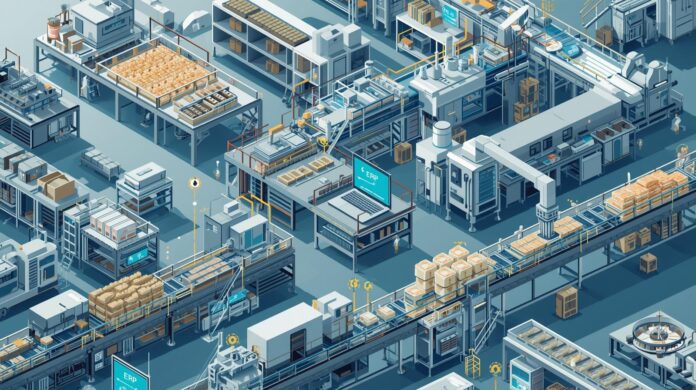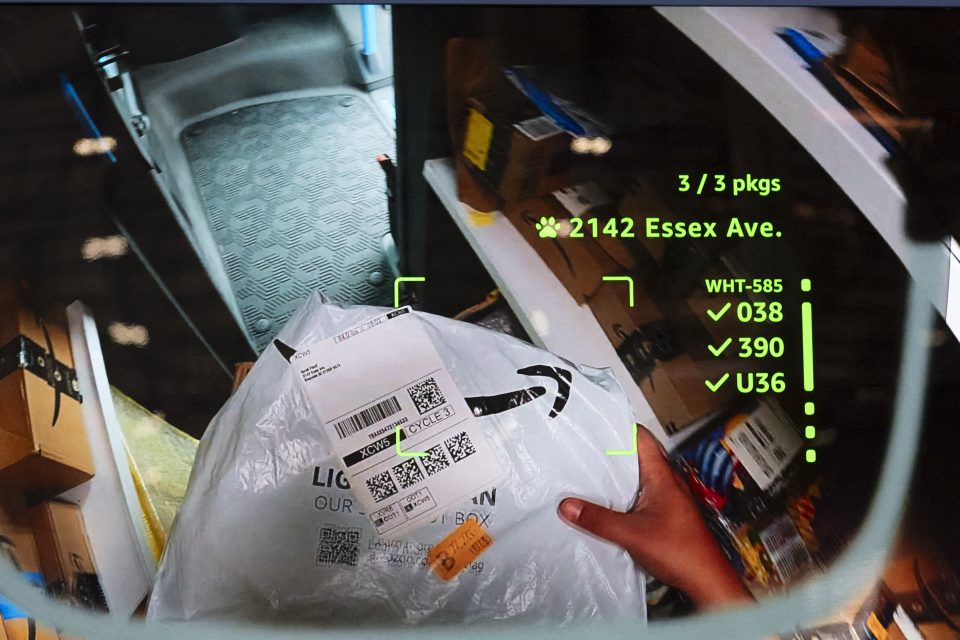
Key takeaways
- Treat your plant systems as one stack: sensors/PLCs at the edge, SCADA for supervision, MES for execution, ERP for business, and analytics as the cross‑cutting data layer.
- Design integrations around a few critical flows — orders and recipes down; events, quality, and genealogy up — so every team (execs, ops, quality, IT) speaks the same language about priorities.
- Start small but connected: standardize tags and master data early, choose open protocols, and build an analytics-ready “hub” so AI use cases scale beyond pilots.
When technologies don’t talk to each other, it creates a significant stumbling block for food and beverage manufacturers, causing digital transformation initiatives to fail. A clear view of the stack — what each layer does, what data it creates, and how layers connect — lets executive, operations, and innovation leaders set realistic roadmaps, avoid duplicate spend, and move faster on digital quality, traceability, and AI.
This is even more critical as companies scramble to adopt AI. Deloitte’s 2025 Smart Manufacturing Survey reports that 29% of manufacturers are using AI/machine learning at the facility or network level and 24% have deployed generative AI, with many more piloting both. That only pays off when the data plumbing is sound.
McKinsey’s 2025 workplace AI research adds: “Almost all companies invest in AI, but just 1 percent believe they are at maturity.” That gap is often an integration gap — data exists, but not in the right system, format, or time.
Understanding the tech stack from bottom to top
- Sensors: These are the eyes and ears of the line — temperature probes, flow meters, load cells, and vision systems. They generate raw signals (high-frequency, time‑stamped) that represent the physical state of the process.
- PLCs (programmable logic controllers): Rugged, real‑time controllers that read sensor signals and actuate equipment (e.g., motors, valves). Think of PLCs as the reflexes of the plant. They run deterministic logic in milliseconds.
- SCADA (supervisory control and data acquisition): As the operator interface and supervisory layer, SCADA systems visualize the process, generate alarms, execute manual or semi‑automatic commands, and often house a historian for time‑series data. They don’t manage who should run what job next — that’s higher up.
- MES (manufacturing execution system): This is the “run the shift” system. MES orchestrates work orders, recipes, batch records, line changeovers, electronic work instructions, quality checks, and lot genealogy. It turns plans into executable steps and records what actually happened.
- ERP (enterprise resource planning): The business backbone for finance, procurement, sales, demand, inventory, and master data (e.g., materials, customers, suppliers). ERP answers “what should we make and when?” and “what did it cost?”
- Analytics and AI platforms: This is the cross-cutting layer that blends time‑series (SCADA/historian), transactional (MES/ERP), and quality data into KPIs and models: OEE (Overall Equipment Effectiveness), waste, predictive quality, and maintenance. It’s usually implemented as an industrial data platform, often a hub or “unified namespace” that feeds dashboards and data science tools.
How data actually flows in a modern food plant
Plans and recipes move down
ERP releases a planned production order with product, quantity, due date, and material availability. MES dispatches the order to a line or cell, applies the correct recipe or batch parameters, and hands critical setpoints to SCADA/PLCs.
Events, quality, and genealogy move up
As operators run, MES records start/stop, changeover times, deviations, hold/release status, in‑process checks, and lot/lot consumption. SCADA/historians capture high‑frequency conditions (e.g., temps, weights, CIP cycles). Analytics unifies it to compute OEE and yield and gives predictive signals back to MES/SCADA (such as “tighten fryer temp window now”).
Finance and supply chain close the loop
ERP consumes confirmations, scrap, and consumption from MES to update inventory, COGS, and replenishment plans, and to settle performance against plan.
Latency matters: PLC/SCADA operate in milliseconds/seconds, MES in minutes, and ERP in hours/days. Keep real‑time control near the edge, keep business planning in ERP, and use analytics to bridge them without overloading any layer.
Integration points that matter
- Link your ERP system with your MES so orders, the BOMs, recipes, and inventory confirmations flow automatically. This eliminates manual travelers, improving inventory accuracy and COGS and speeding changeovers.
- Tighten the connection between MES and your SCADA layer and PLCs so job control and parameter handoffs are precise. This reduces setpoint errors, enables clean electronic batch records, and strengthens compliance, which benefits QA, regulatory teams, and operations.
- Integrate MES with your LIMS so inline checks can trigger lab holds in real time and maintain full lot genealogy with COAs, which directly supports QA and customer service.
- Feed your edge historian into an analytics platform to create a single, high-quality time-series source for SPC, energy insights, and predictive models, fueling CI, data science, and maintenance.
- Connect your CMMS/EAM with MES/SCADA to drive condition-based work orders and clear, shared downtime reasons for maintenance and reliability engineering.
- Integrate labeling and serialization with MES to ensure a clean handoff of GTINs, date codes, and allergen or claim logic, safeguarding packaging engineering, QA, and customer teams.
A simple architecture that scales
- Adopt ISA‑95 modeling early. Map equipment, materials, and personnel consistently. It makes ERP↔MES and MES↔SCADA conversations concrete.
- Choose open industrial protocols. Favor OPC UA (open platform communications unified architecture) for OT data models and MQTT (message queuing telemetry transport) for publish/subscribe distribution.
- Stand up a “hub” data layer. Use an industrial data platform or unified namespace to publish clean, time‑stamped events (e.g., machine state, orders, lots) that analytics can consume without hitting PLCs or MES directly.
- Standardize tags and master data. Agree on naming for lines, assets, products, and lots. Ten hours spent naming saves hundreds later.
- Segment the network. Keep PLCs on protected OT networks, let an edge gateway broker data to IT/Cloud, and authenticate every client.
- Instrument for observability. Log equipment state changes, setpoint changes, and operator actions with user/time context. You can’t improve what you can’t reconstruct.
A “good” food tech stack feels boring — in the best way. Jobs appear on the HMI without typing. Setpoints are correct by default. Quality checks auto‑trigger on changeovers. Downtime reasons are selected once and reused everywhere. Finance closes faster because consumption and scrap are accurate. When customers call, you can trace a lot’s genealogy within seconds.
With a shared vocabulary and a few crisp interfaces, the technology stack stops being mysterious and starts being a durable advantage for quality, throughput, and trust.
FAQ for food manufacturing leaders
Q: What’s the practical difference between SCADA and MES?
A: SCADA is the supervisor and visualizer of equipment in real time; MES is the planner and recorder of work. SCADA answers “what is the line doing right now?” MES answers “what job should run next and did we make it to spec?”
Q: Do we need an ERP if our MES is strong?
A: Yes. ERP owns the commercial truth: demand, purchasing, costing, and financial close. MES runs operations and feeds ERP the facts of production.
Q: Can MES talk directly to PLCs without SCADA?
A: It can via gateways, but SCADA (plus a historian) is the right place for operator visualization, alarm management, and high‑frequency data. Keep real‑time control near the equipment.
Q: Where does a historian fit?
A: Alongside SCADA at the edge. It stores high‑resolution time‑series data (seconds or milliseconds). MES and analytics pull summarized events and features from it.
Q: How do we prioritize cybersecurity without slowing projects?
A: Segment networks (OT vs. IT), use identity for every client, store credentials in the gateway — not in PLCs — and adopt change‑control for logic and setpoints. Build these once; reuse on every line.
Q: What if my legacy machines lack modern PLCs?
A: Retrofit with edge sensors and IO modules, or add a skid‑mounted micro‑PLC that publishes via OPC UA/MQTT. Start with the constraint asset where data drives the most value.

Credit: Source link



![[eBook] 2026 Food & Beverage Trend Forecast [eBook] 2026 Food & Beverage Trend Forecast](https://foodindustryexecutive.com/wp-content/uploads/2025/11/FoodIndustryExecutive-900x600px-150x150.png)










